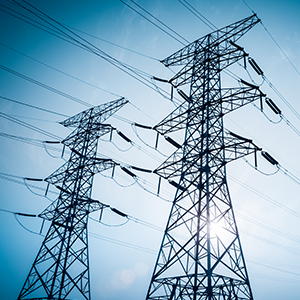Blog
Published: February 09, 2017
Changes in Ontario Capacity Market Mark New Opportunities for Small Industrials
Independent Electricity System Operator, the Independent System Operator for Ontario, Canada, recently changed its capacity market to give medium-sized industrial customers the option to augment...
Changes in Ontario Capacity Market Mark New Opportunities for Small Industrials
February 09, 2017

Independent Electricity System Operator, the Independent System Operator for Ontario, Canada, recently changed its capacity market to give medium-sized industrial customers the option to augment their capacity charges by shifting their demand from peak to non-peak hours. Previously, this capability was available only to large sites that had a monthly peak demand of greater than 5 MW while smaller sites were charged based off their power consumption rather than peak demand.
The Global Adjustment capacity program run by IESO creates a two tier system within the footprint of IESO: Class A customers operate facilities that have a peak demand of 5 MW (5,000 kW) per month while Class B customers have demand peaks between 50 kW and 5 MW. Customers with less than 50 kW peaks are not classified and do not see Global Adjustment charges as a line-item on their bill. These fees apply to all qualifying customers within the footprint, even those that are not billed by IESO directly.
Class A customers participate in the Industrial Conservation Initiative (ICI) which is similar to a traditional capacity market. Each year, capacity payments are based off of the customer’s usage during the five hours throughout the previous year in which the ISO saw the greatest demand. These peak hours, or coincident peaks, can only occur once per day, but unlike most U.S. ISOs the peaks can and do occur in summer and winter periods. Class B customers are charged via a rate-based system based on the number of kilowatt-hours they consumed over the course a given month.
By charging large customers based off their demand rather than their consumption the ISO sees smaller peak loads. Most of the facilities that participate in the ICI are large factories that run around the clock and many have on site generation for outages. This enables them to either activate this generation during peak hours to offset their load or to simply produce less during these hours. While both actions can cost the money in the short-term, the potential savings in Global Adjustment charges can be much larger.
Effective January of 2017, Class B customers can option into Class A status if they have a regular monthly demand of 1 MW or greater. This is similar to a change made in 2014 that allowed Class B customers with demand peaks of 3 MW to become Class A. These sites were not initially included in the ICI owing to many smaller facilities not being able to shift their load as effectively as large sites, however the ISO has seen a tremendous response from Class A customers and has elected to give smaller customers the same abilities.
This increased concern over peak loads comes as the Canadian Energy industry is looking at the prospects of a significant paradigm shift in coming years. Carbon cap-and-trade systems will soon be in place over the entire country and traditional coal generation is actively being phased out. In many cases the generation methods used to achieve these peak loads are both the most expensive and emissions heavy, meaning that gains made in “flattening” load peaks is beneficial to the ISO. For example, petroleum generation used for peaking purposes can cost more than $20,000 per megawatt per year to keep online and produces more CO2 than a coal generator when running. In a carbon-priced scenario, these costs will rise even more, exponentially at times.
IESO is hoping that this expansion of the ICI will lessen the need for these types of generation. In total the ICI has decreased yearly peak loads by almost 10%, from 24 GW in 2014 to 22 GW in 2016. Once new standards are in place, IESO is hoping that an additional 800-1,200 MW can be shaved from their annual peak load.
